Image Source: TAOSNEWS.COMLOUIS RIBAK
1902-1979
Louis Ribak left Lithuania and immigrated to the United States with some of his family when he was ten. His witnessing of violent programs in his native country probably influenced his political leaning as an adult.
Much of his time in elementary school was spent drawing from these experiences. Ribak decided not to take over the family hat making business and attended art school.
LOUIS RIBAK BIOGRAPHY
-
John Sloan, one of the founding members of the Ash Can school became his mentor and got him a scholarship to study at the Art Student League. Sloan edited the radical periodical, New Masses. Ribak jumped in and did the illustrations. He went on to be a founding member of the communist group called the John Reed club. His leftist politics Influenced his art. His early works evolved around social realism. He worked for the WPA as a muralist and assisted Diego Rivera on the mural for the lobby of the Rockefeller Center.
Ribak met fellow artist Bea Mandelman at a dance sponsored by the artist’s union and married her shortly after. He was discharged from the military in WWII because of asthma. They decided to follow John Sloan to New Mexico for health and artistic reasons. His health improved and he shifted his painterly style entirely to abstraction. He was an important force behind forming the Taos Moderns and the Taos Valley Art School. Ribak’s later work evolved into what can be described as lyrical Abstract Expressionism. Artists of this movement veered away from hard-edged geometric imagery to the primacy of line in a lyrical sensuous style. His palette became brighter.
He encouraged his students in Taos not to follow any academic ideals. He is quoted as saying that as an artist he was “not truly anything. I am against everything. Dammed abstract (ionists), realists, illustrators…” To be independent of authority or tradition and to form one’s own artistic identity was the message he taught and believed in.
Ribak’s paintings are in an impressive array of collections including the Metropolitan Museum of Art, the Whitney museum, the Smithsonian American Art Museum and the Art Institute of Chicago. A new wing of the Harwood Museum of Art in Taos, New Mexico has been dedicated to Ribak’s work.







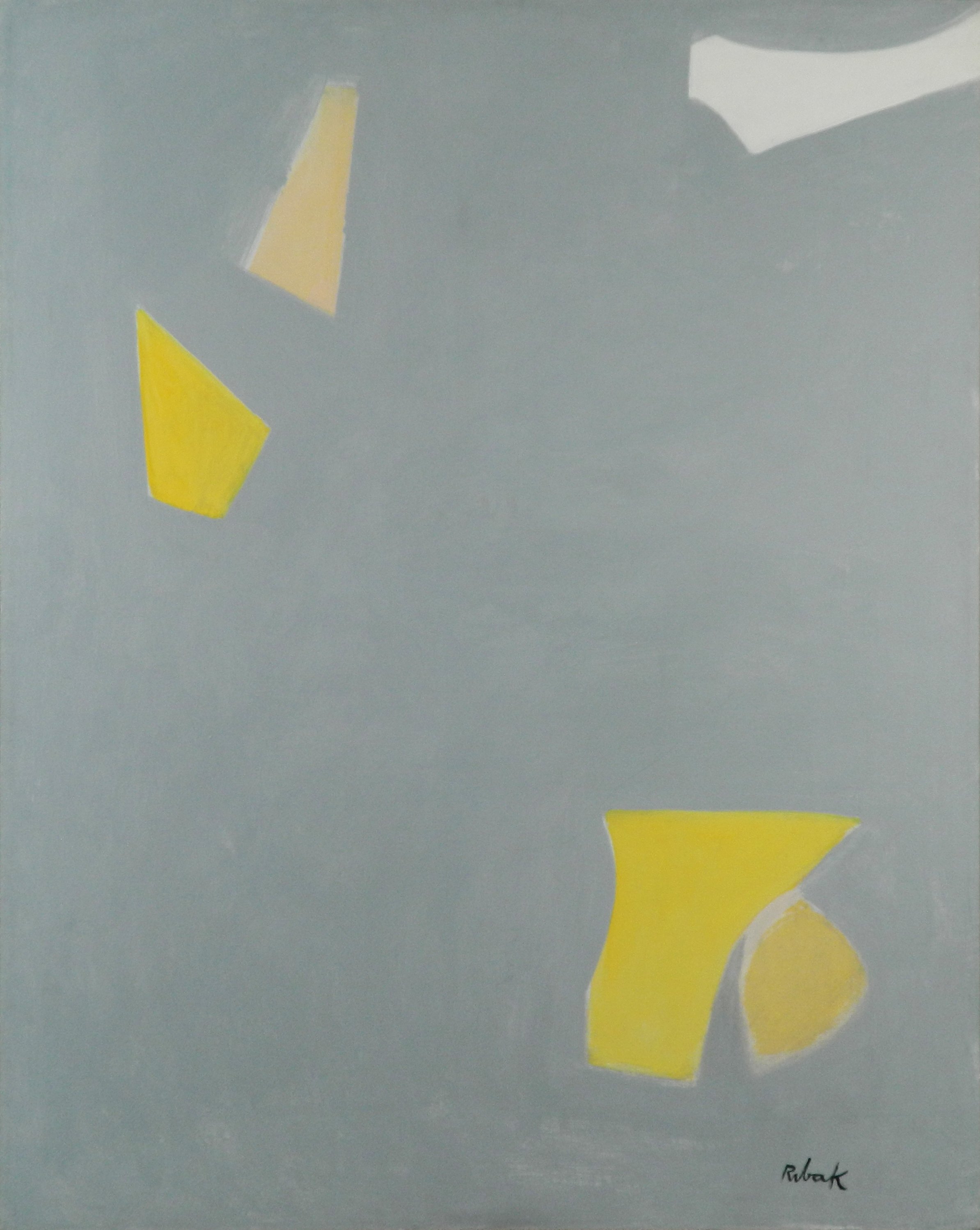

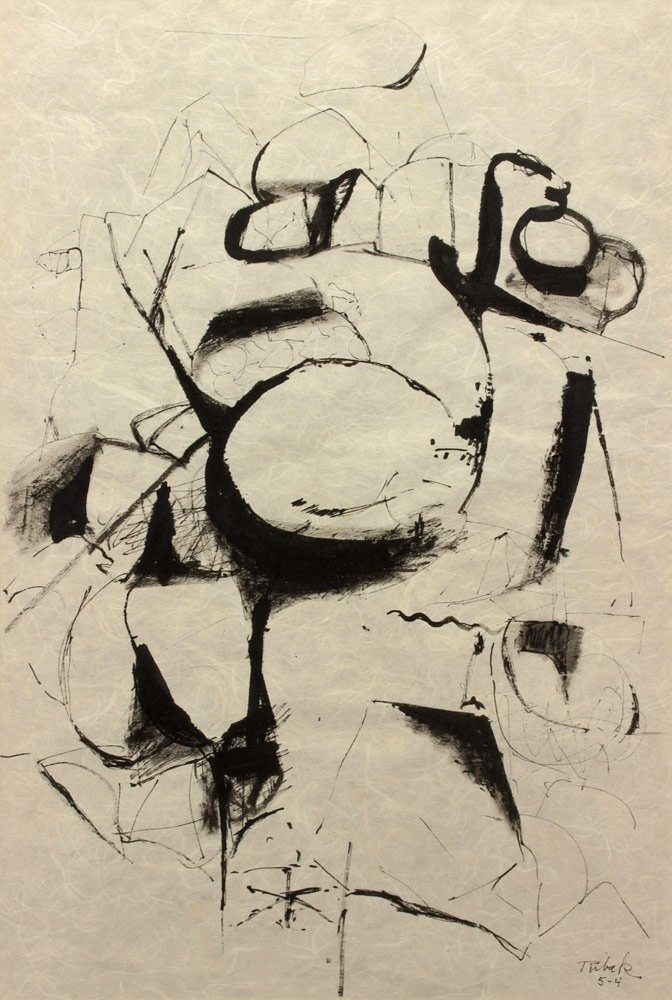
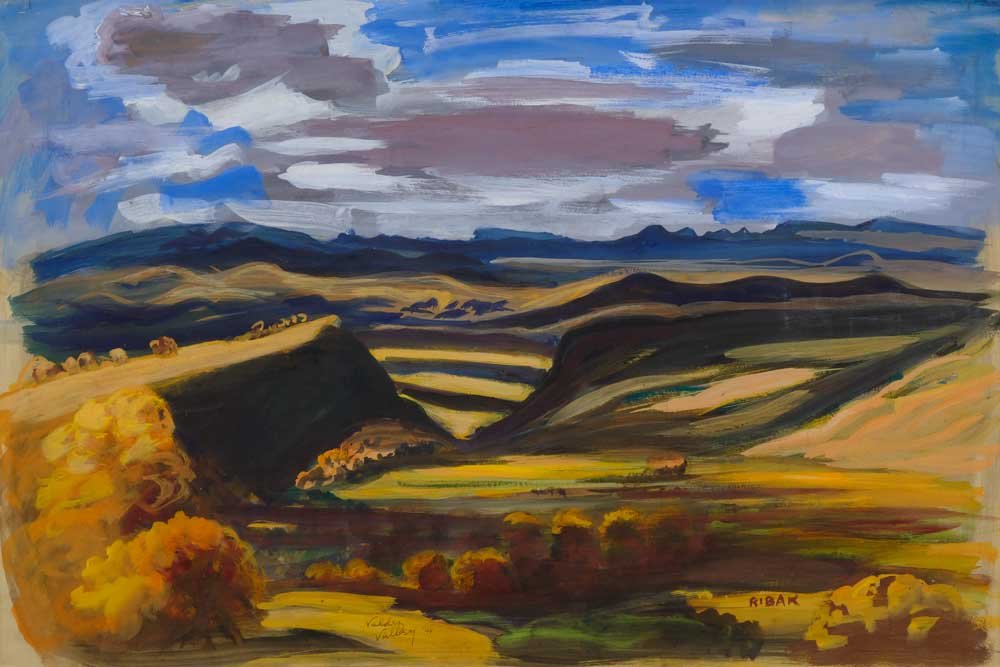
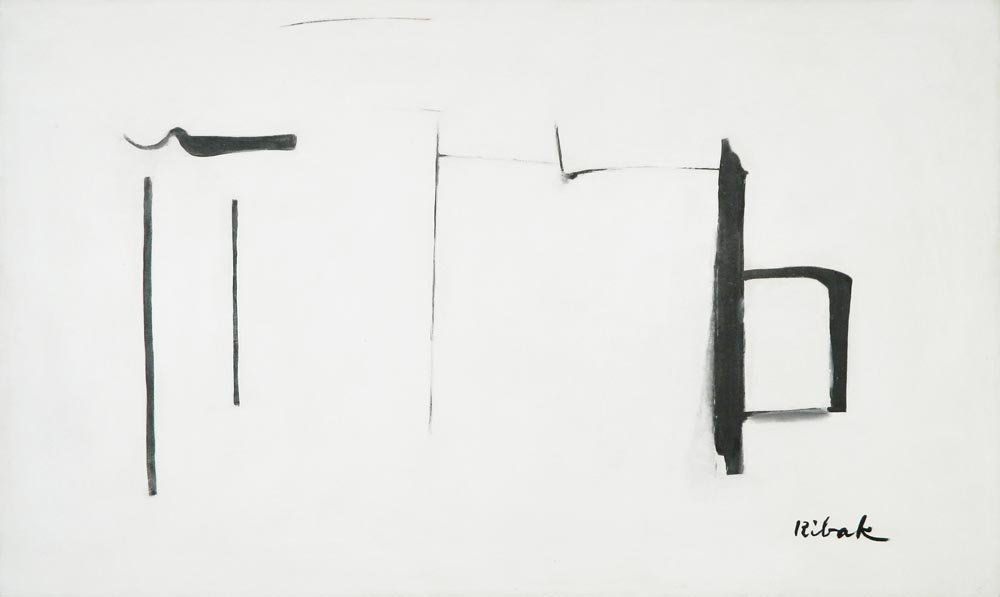


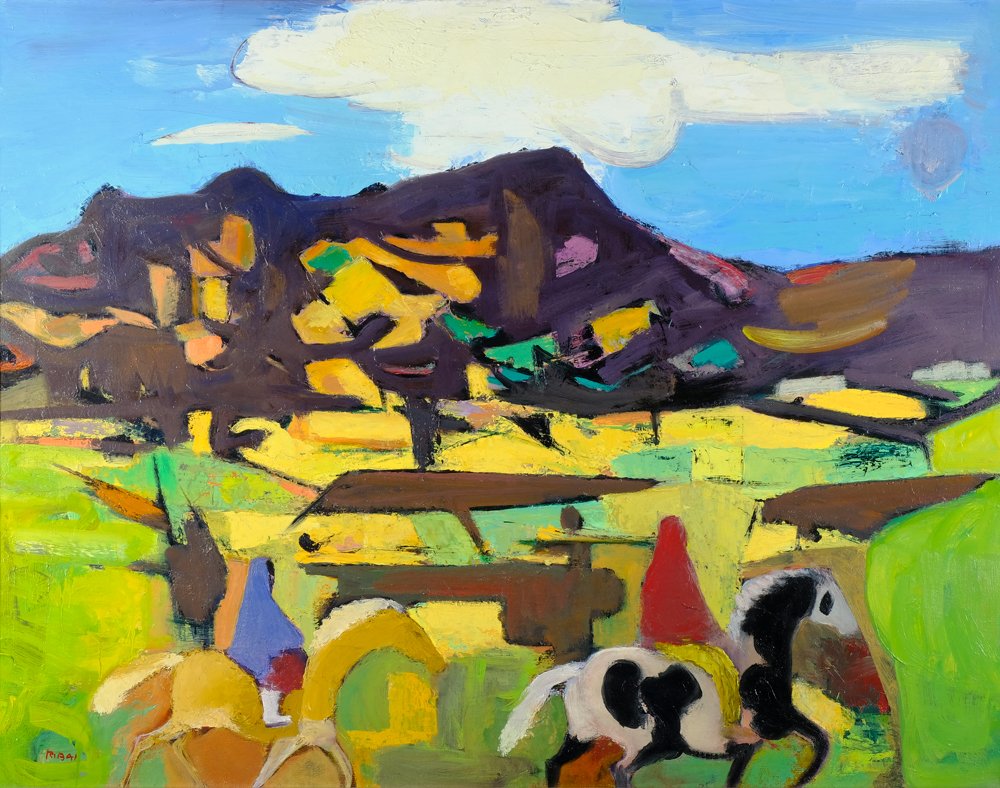
1946
Watercolor on paper
20 x 29 1/2 inches
Signed lower right
Dated and titled lower left
SOLD